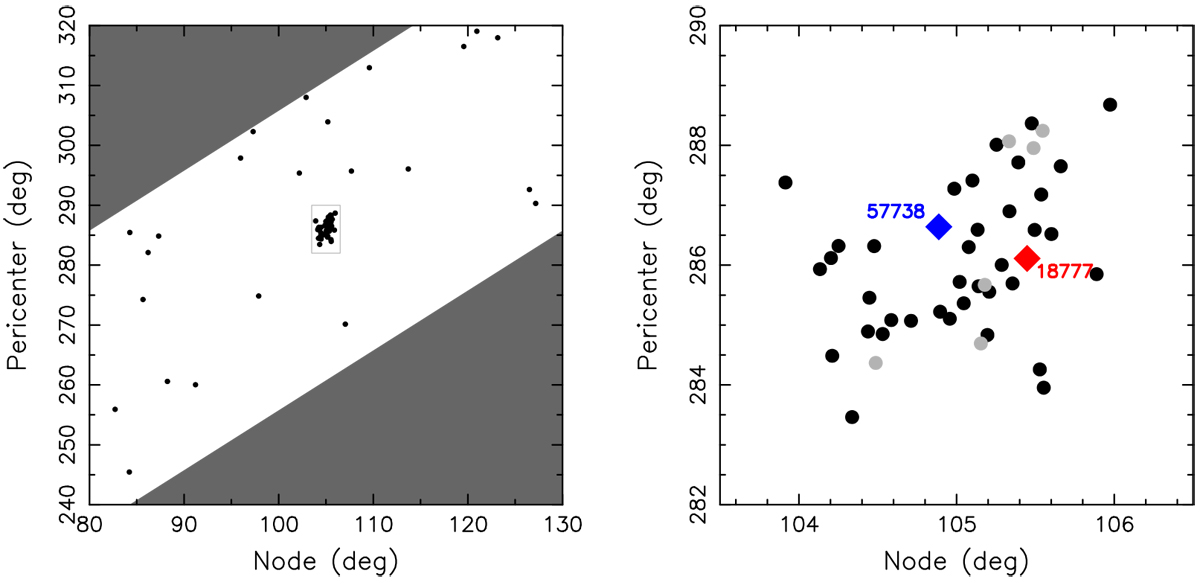Fig. 1

Download original image
Osculating values of the heliocentric secular angles in the ecliptic system in the target zone surrounding the Hobson family: the longitude of node Ω (abscissa) vs. the longitude of perihelion ϖ (ordinate). Left panel: total of 69 asteroids, clearly divided into (i) a random background population, and (ii) a strongly clustered family (symbols highlighted by the rectangle). Because the initial search used the argument of perihelion ω, the actively probed region around (18777) Hobson becomes tilted in Ω vs. ϖ axes, and the corner triangles in dark gray are excluded. Right panel: zoom on the Hobson family structure (range of the axes as in the gray rectangle in the left panel). The two largest asteroids, (18777) Hobson and (57738) 2001 UZ160, are highlighted in red and blue with diamonds. All smaller members are shown by filled circles: multi-opposition orbits in black, and the six single-opposition orbits in gray (asteroids 2014 JH120, 2014 OJ66, 2020 JM31, 2020 KP36, 2020 OY50, and 2021 MO5; Table A.1). The family is unusually compact in both Ω and ϖ, promising very young age.
Current usage metrics show cumulative count of Article Views (full-text article views including HTML views, PDF and ePub downloads, according to the available data) and Abstracts Views on Vision4Press platform.
Data correspond to usage on the plateform after 2015. The current usage metrics is available 48-96 hours after online publication and is updated daily on week days.
Initial download of the metrics may take a while.


